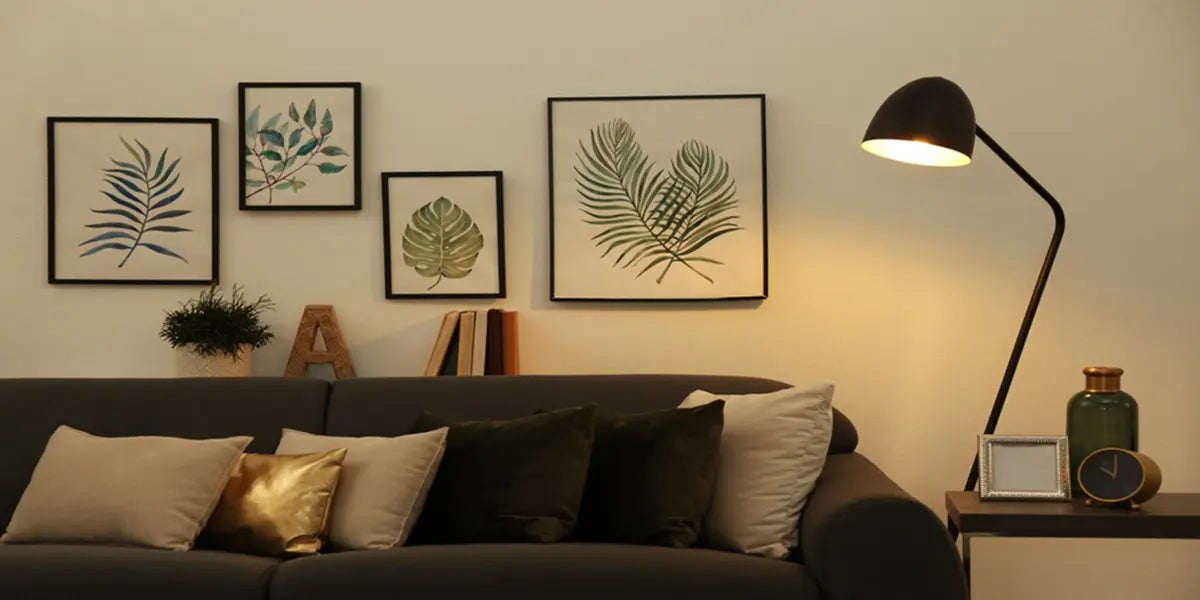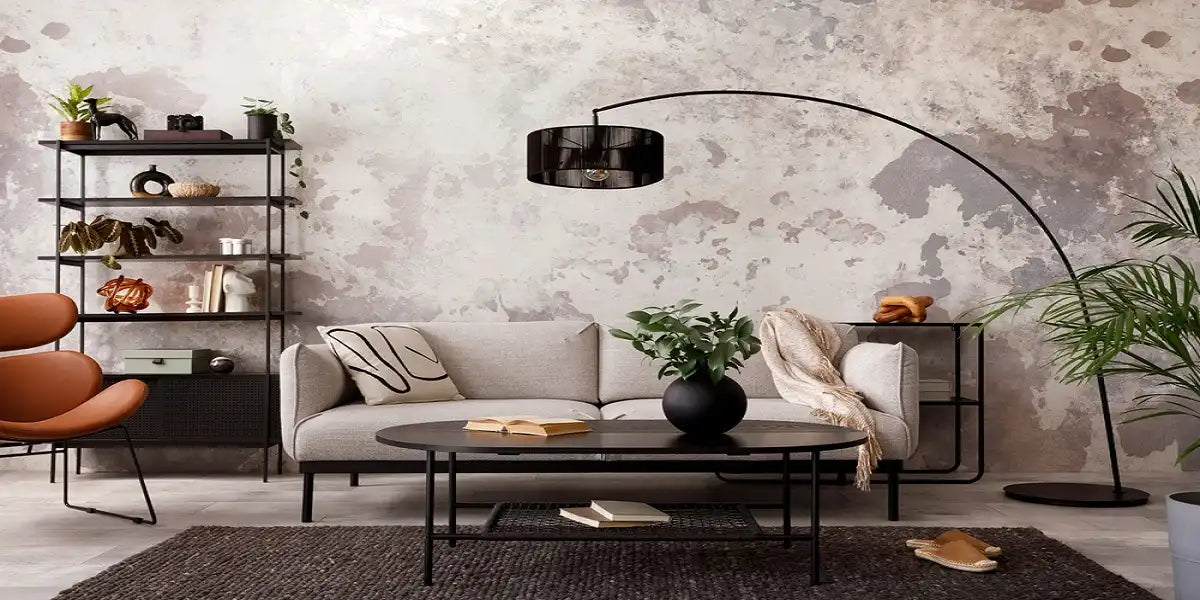Welcome to our essential guide on responsibly disposing of floor lamps—a small step with a big impact on our environment.
Every year, countless lamps end up in landfills, contributing to pollution and resource depletion. This blog talks about the importance of eco-friendly disposal and the bad effects of not caring for the environment.
Join us as we explore practical, sustainable solutions to ensure your floor lamp's end-of-life journey contributes positively to our planet.
Let's illuminate the path to responsible disposal together!
Understanding the Components of a Floor Lamp
When I examine a floor lamp, I consider its main components. These include the base, stand or pole, socket, shade, and wiring. Most floor lamps have a heavy base that provides stability. Different materials can make up this anchor, usually metal or filled with a heavier substance like sand or concrete for weight.
Moving up, the stand connects to the base. It's typically metal or wood. A slender pole or a more ornate structure supports the electrical components and shade.
The socket is vital—it's where the bulb connects to the power source. Various types of sockets exist, fitting various bulb sizes and types.
The shade diffuses light. Shades can be fabric, glass, metal, or plastic, influencing the lamp's ambient effect. The wiring runs through the pole, linking the socket to the plug.
Table for Quick Component Overview of a Floor Lamp
| Component | Material Options | Function |
| Base | Metal/Wood/Plastic | Stability |
| Stand | Metal/Wood | Support |
| Socket | Metal/Plastic | Power Connection |
| Shade | Fabric/Glass/Metal/Plastic | Light Diffusion |
| Wiring | Copper/Aluminum | Conduct Electricity |
The lifespan of a floor lamp depends on its build quality, usage, and care. Durability varies, but many lamps can light up a room for years before showing any signs of wear. Eventually, elements might falter—the switch might feel loose, or the stand could crack. When these issues become irreparable, it's time for proper disposal.
For those looking to purchase new eco-friendly and sustainable lighting options, explore our collection of recyclable floor lamps, designed to minimize environmental impact while maximizing your home's style and efficiency.
Preparing Your Lamp for Disposal
When it comes to discarding a floor lamp, safety and proper separation of components are critical. I'll guide you through assessing its condition, following safety protocols, and dismantling your lamp effectively.
Assessing the Condition: Repairable vs. Non-Repairable
First, I examine the lamp to decide if it’s repairable. If it's just an old shade or a burnt-out LED bulb, it’s often fixable. However, a damaged cord or faulty wiring might make it non-repairable.
For a broken LED lamp, most parts like the metal base or stand can still be recycled. Fluorescent lights have mercury, so I'm careful to decide if they can be fixed safely or need special disposal.
Handling and Safety Guidelines
Safety is my priority. Before I start dismantling, I ensure I'm wearing gloves to protect against any sharp edges or glass.
For lamps with mercury or batteries, I follow local regulations for hazardous waste. I handle the glass components with care, wrapping them in newspaper to prevent breakage during disposal. Metals like copper and steel from the lamp are set aside for recycling.
Dismantling Process
Next, I take the lamp apart piece by piece. Starting from the top, I remove the bulb, lampshade, and any small pieces holding the shade in place.
I keep a container handy for screws and small metals. For fluorescent bulbs, I keep them intact to avoid mercury exposure. I then separate the materials:
- Glass: Often found in shades or bulbs
- Metals: Base, frame, screws
- Plastic: Sometimes used in housings or fittings
Each material is grouped to recycle correctly. With everything dismantled, each part of the lamp is now ready for proper disposal or recycling. Remember, handling and dismantling your lamp the right way makes a huge difference in safe disposal and environmental protection.
Options to Dispose of Floor Lamps
When floor lamps outlive their usefulness or no longer fit our decor, it's critical to discard them responsibly. This guide unpacks the right ways to clear out old floor lamps, keeping in mind eco-friendliness and local rules.
Recycling Centers and Programs
I check with my local recycling center to determine whether they accept floor lamps. These centers often have the means to handle the recycling process for items such as metal, glass, and plastic parts. I also search for programs that recycle lamps and handle household waste, like light fixtures, to help the environment.
Selling or Donating Floor Lamps
Before thinking of disposal, I consider if someone else might find my old lamp useful. Selling platforms like eBay or Craigslist are good options. For a more philanthropic choice, I donate to charities or thrift stores where my lamp could be repurposed and provide value to someone else.
DIY Projects and Upcycling
I like to get creative by upcycling my outdated floor lamps into art projects or new furniture pieces. This not only saves the lamp from landfills but also gives me a chance to personalize my space with a unique piece. Upcycling is a fun and responsible way to repurpose old materials.
Trash and Landfill Considerations
If a floor lamp is beyond repair and not suitable for recycling, I ensure to follow waste disposal procedures. Disposing of lamps in the trash should be a last resort due to the potential harm to the environment. I take steps to remove any potentially hazardous materials before trashing them.
Consult Local Disposal Regulations
Lastly, I familiarize myself with local regulations on lamp disposal. These can vary widely and may dictate specific disposal procedures to prevent harm to natural resources. I make a point to stay informed and comply with these regulations to support responsible disposal.
Responsible Disposal Practices
I can't stress enough how crucial it is to dispose of old lamps thoughtfully. Being irresponsible can hurt the environment and go against local regulations. Let's break down what you need to know.
Environmental Impact and Regulations
We all have a part to play in preserving the environment, and that includes how we say goodbye to household items like floor lamps. When I toss an old lamp in the trash, it often ends up in landfills, which isn't good for our planet.
Some lamps, especially fluorescent ones, contain materials like mercury that are harmful to the natural world. Because of this, many areas have regulations against dumping lamps with your regular garbage. Here's my quick checklist to ensure I'm following the rules:
1. Check local regulations: Laws differ from place to place, so I make sure to look up what mine says about lamp disposal.
2. Identify hazardous components: If the lamp is fluorescent, it's more likely to contain materials that must be handled with special care.
Community Waste Programs
My next step is to seek out community recycling programs. These initiatives make proper disposal easy and eco-friendly, helping to reduce waste sustainably. Community waste programs have specific days to drop off electronics and unused household items. Here’s what I do to help the earth and my community:
- Find a recycling program: I use online search tools or contact my local waste management facility to see if they accept old lamps.
- Donation centers: If my lamp is still usable, donating it can be a greener option than recycling—someone else can give it a new life, sparing resources that would have gone to manufacturing a new lamp.
- Ask Questions: It never hurts to reach out to these programs with any frequently asked questions I have about the process.
Doing this shows how much I care about sustainability and being eco-friendly in my daily life.
Final thoughts
By using eco-friendly disposal methods, we help reduce waste, save resources, and lessen our impact on the environment. It's crucial that we all play our part in making informed decisions that benefit our planet.
Please use eco-friendly methods to dispose of your old floor lamps. You can recycle, donate, sell, or repurpose them. Every effort counts in our collective quest for a more sustainable world.
Now, we'd love to hear from you! Share your experiences, challenges, or innovative tips on disposing of floor lamps in the comments below. Your insights could inspire and help others navigate their disposal journey more effectively.
Together, let's light the way to a greener future, one floor lamp at a time.









Leave a comment
All comments are moderated before being published.
This site is protected by hCaptcha and the hCaptcha Privacy Policy and Terms of Service apply.